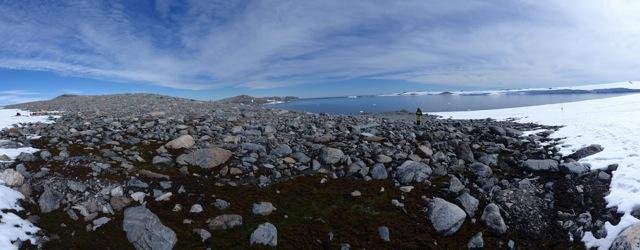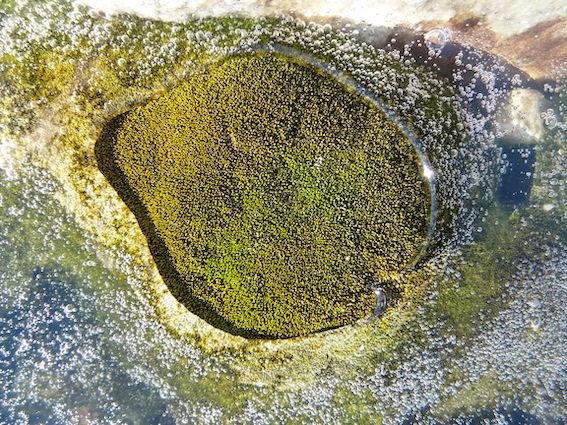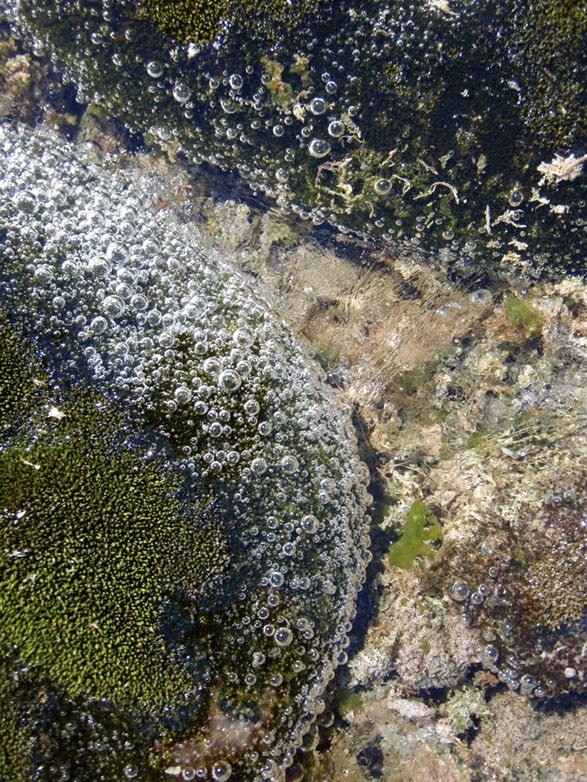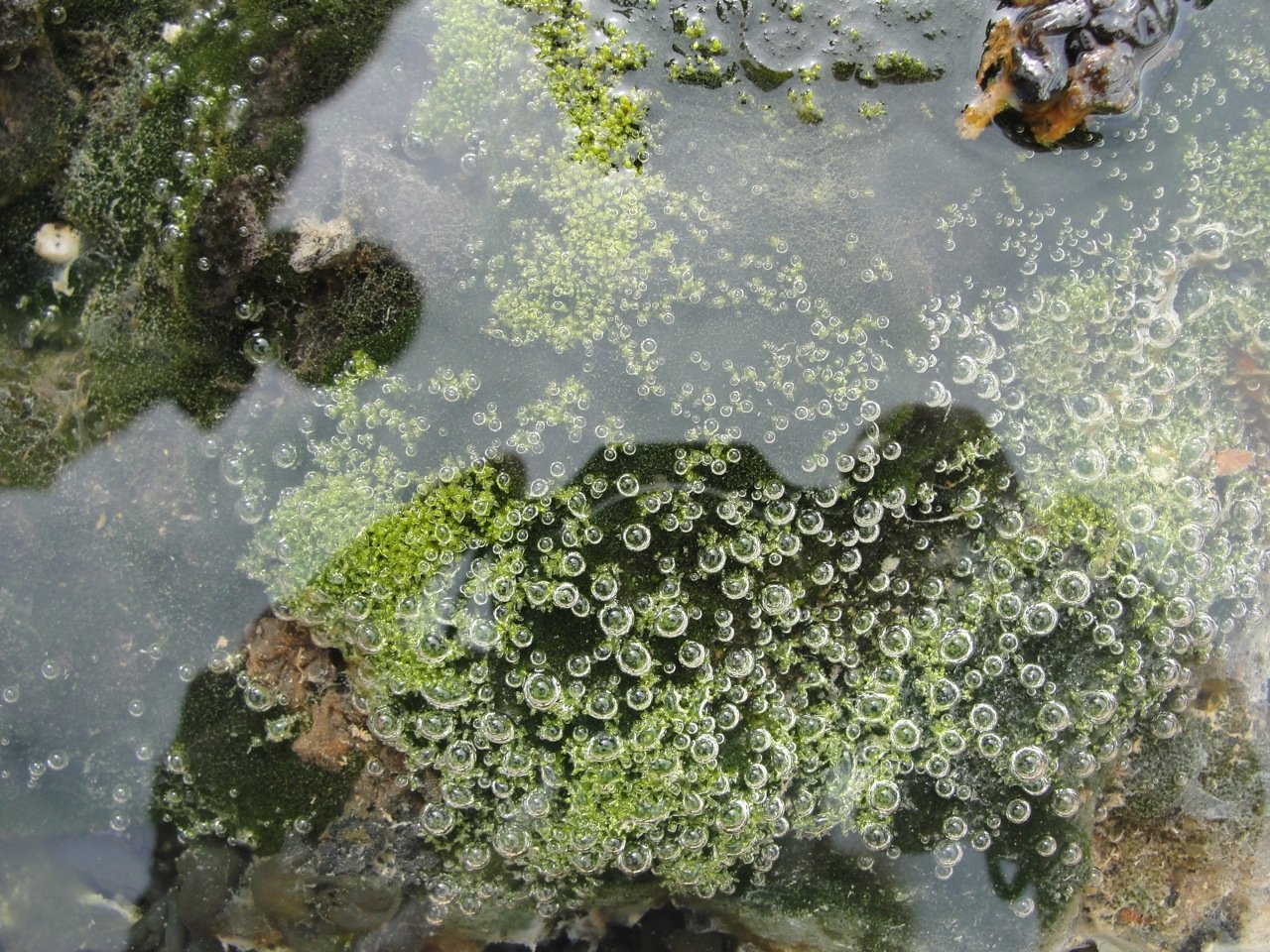We have tried to answer these questions for years. First, we noticed that in summer the Antarctic moss bed surfaces were much warmer than the air temperatures. We found they were warm to the touch and then confirmed this by years of careful measurement. We found that mosses and lichens were actually between 20 -30 ˚C when the air temperature was just above zero. So, by growing low down, sheltered by rocks the mosses were sunbaking (warming up by more than 20 degrees). They also produce dark pigments which may help them warm up in the sun. Some days they even appear to be steaming! So yes they live in warm microclimates.
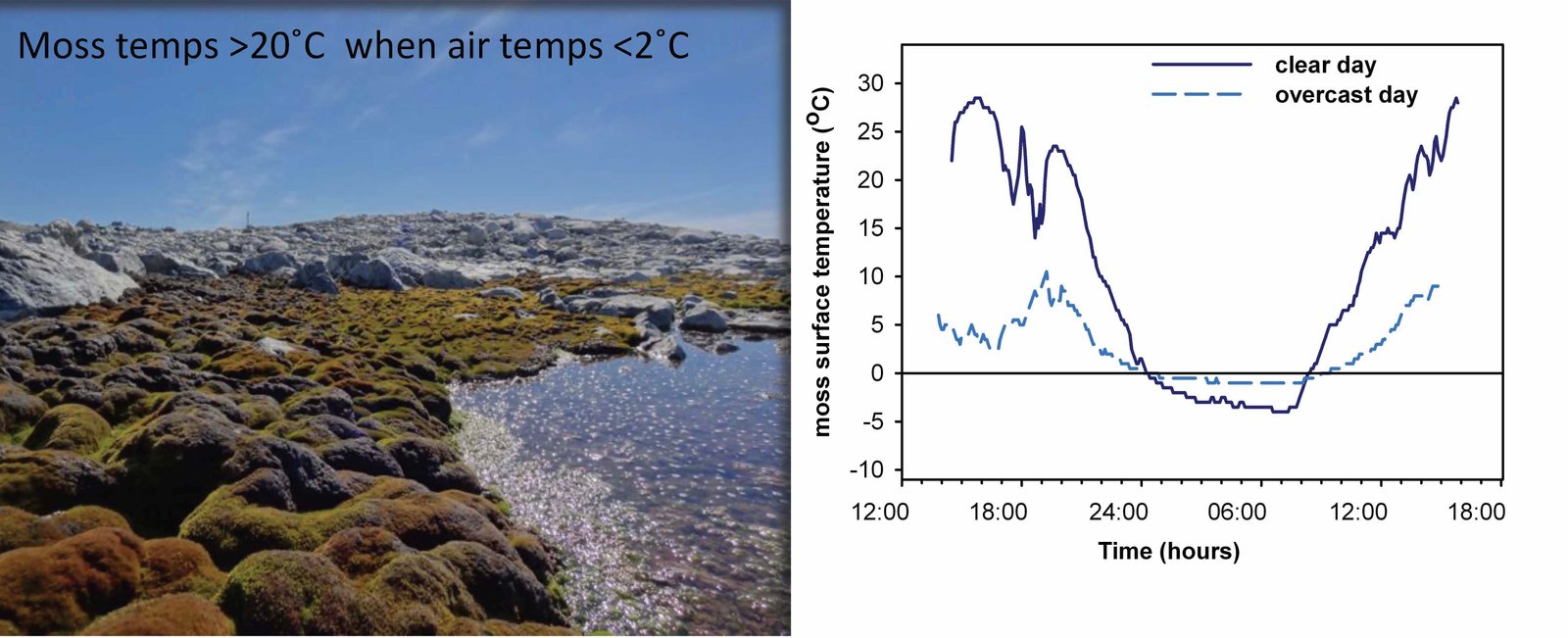
Then we tried to measure their productivity. Usually plant biologists measure photosynthetic gas exchange (e.g. how much carbon dioxide is the plant taking up?). But this is hard to do in the field, so instead we used a technique called chlorophyll fluorescence which is easier to measure on tiny plants under cold field conditions. Chlorophyll fluorescence measures how efficiently plants capture light energy for photosynthesis and how many electrons are running through the electron transport chain, converting the energy from sunlight into chemical energy to fix carbon dioxide. This chlorophyll fluorescence technique told us the plants were doing most photosynthesis between 20 and 30 degrees. BUT before we could get it published we had to convince our colleagues that these chlorophyll fluorescence measurements really did reflect carbon fixation by the mosses.
Then in 2018, the stars aligned, we had recently obtained a new instrument to measure gas exchange and chlorophyll fluorescence simultaneously. We had Antarctic moss in the freezer at the University of Wollongong. And a bright young PhD student who was an expert in making these measurements got a Spanish Government scholarship to visit our lab for 4 months. Alicia Perera-Castro devised a tiny pouch from nylon stocking material to fit the Antarctic mosses into the gas exchange chamber and made measurements of photosynthesis and respiration at temperatures from 5 - 35 ˚C.
Alicia’s paper is now published and shows that both methods (chlorophyll fluorescence and gas exchange) give the same result - maximum values of photosynthesis at canopy temperatures higher than 20°C. This is important because it validates the methodology that is fieldwork friendly. The optimum temperature for Antarctic mosses to fix CO2 in photosynthesis was 20–30°C. Despite the extreme cold conditions that they face over winter, their photosynthetic apparatus is optimised to warm temperatures (just like most other plants). Alicia also worked out that currently East Antarctic mosses were this warm for about 2.5% of the time, but it accounted for between 8-37% of their total carbon gain.
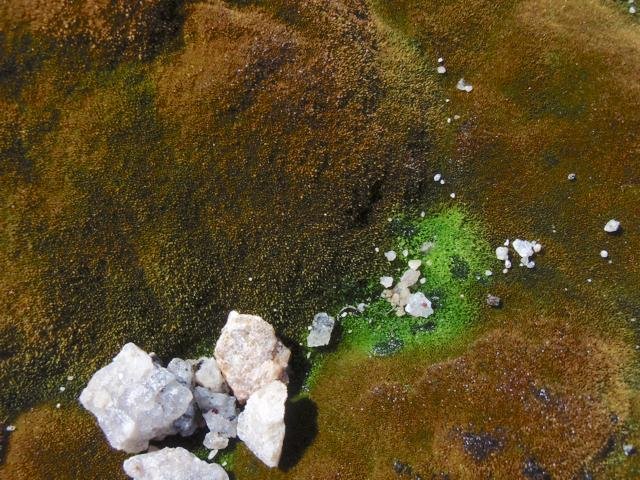
Moss survival in Antarctica’s cold environment relies on their capacity to maximize photosynthesis for brief periods during summer and minimize respiratory carbon losses under cold conditions. While a warming world means in future mosses may have more optimal conditions for growth, it also brings challenges - if water supply is reduced or there is increasing competition from flowering plants. At the moment, sunbaking is a good option to keep moss beds warm but if temperatures rise dramatically, like they did in this years Antarctic heatwave, sunbaking mosses could get dangerously hot.
